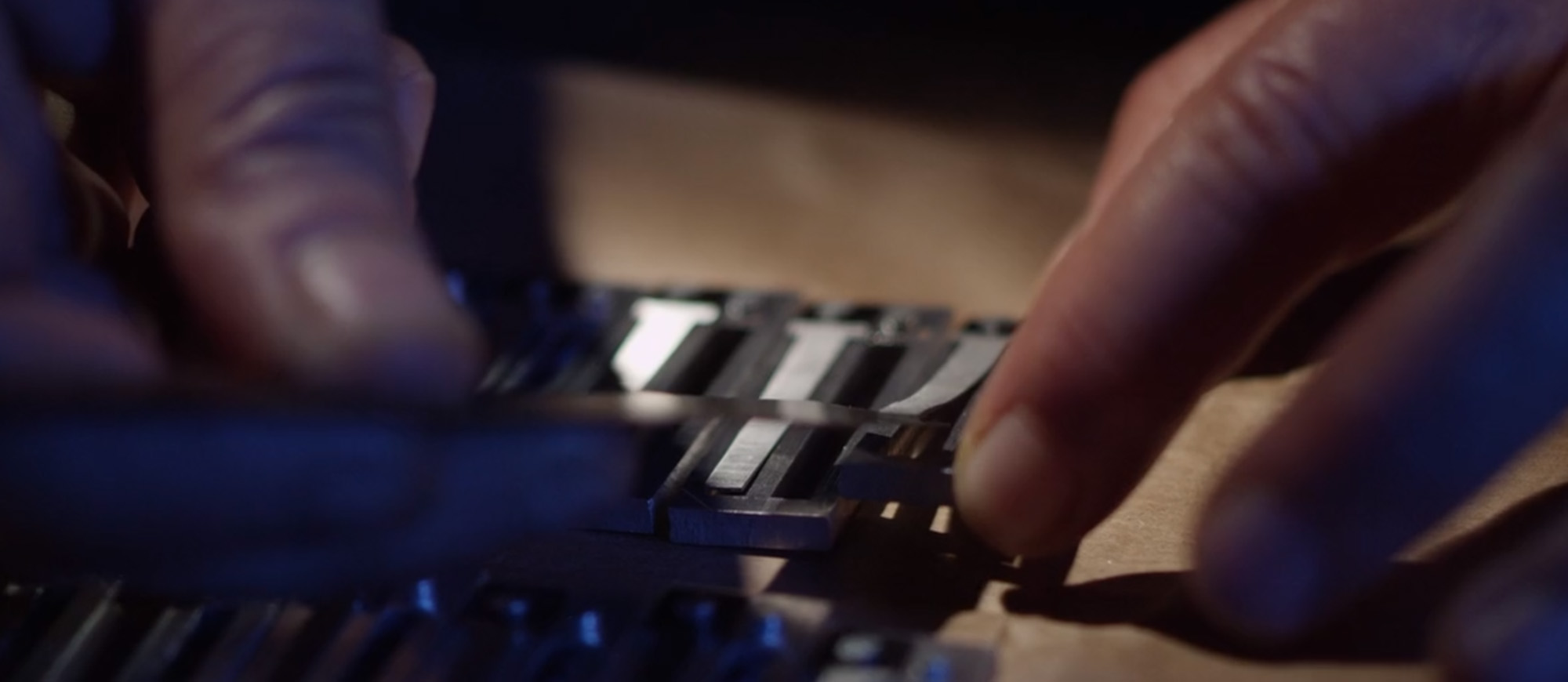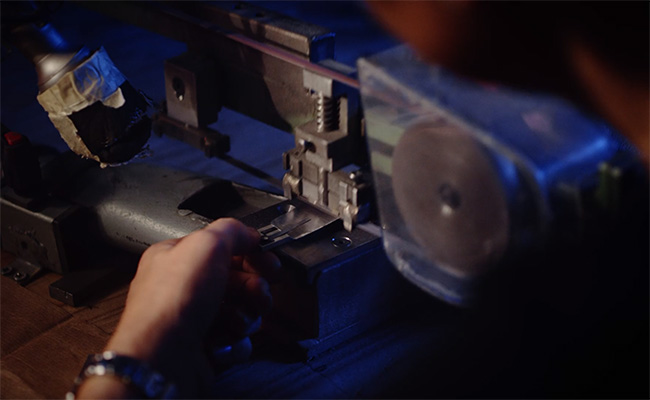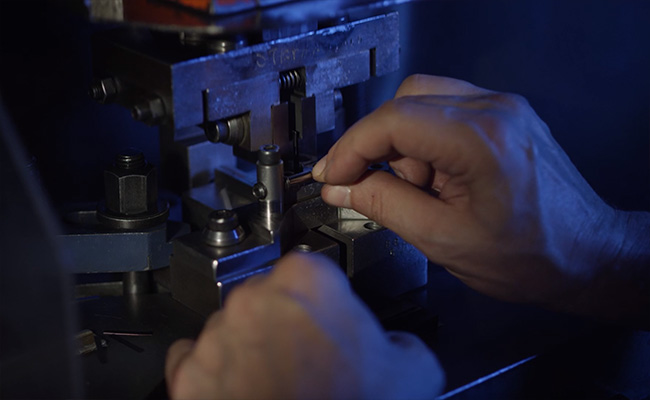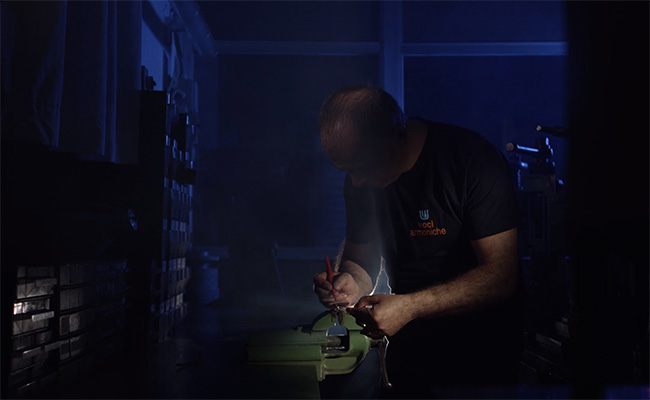by Lorenzo Antonelli
It is too simplistic to define the quality of reeds in negative terms, as the absence of flaws, such as excessive air consumption during playing, a lack of stability in the final tuning of the reeds or the premature breakage of the tongues due to stress.
For reeds, quality is a positive concept: a presence of elements that qualify and distinguish the reeds for their overall acoustic value and their expressive potentials, and not an absence of basic elements that simply enable them to work well, which should never be lacking.
We can say with certainty that one of the most important aspects in the construction of a free-reed aerophone is to “extract” the sound potential from the reeds.
So, the higher the potential of the reeds, the more can be extracted from them. The quality of reeds can therefore be identified in their acoustic potential.
What does quality mean in practical terms for a reed that works well? What enables a reed to be defined as high quality and endowed with high acoustic potential?
The following seven points explain the elements of quality that determine the positive acoustic value of our reeds.
In the final section, the eighth point describes the most important conditions required for them to function correctly and to optimise the acoustic potential in the instrument.
-
QUALITY IN ALL THE REEDS OF THE RANGE

All the various types of reeds that make up our range, with different names and characteristics, explained in detail in the comparative table page, share specific fundamental characteristics that qualify them as excellent reeds: these as the constructive elements which, in addition to guaranteeing their effective operation, also determine the ability to generate a quality sound that can objectively be considered beautiful, balanced and expressive.
The purpose of the range we propose is to offer our customers a choice between different acoustic possibilities and prices, depending on their preference and musical tastes. For our reeds, it would be incorrect to consider that a less expensive reed is of inferior quality, if we define quality as the presence of value, that is, the presence of positive elements of acoustic quality specified in this page. The price of a reed is proportionate to the costs required to produce it, due to the various working phases, finishes and materials.
-
RAW MATERIALS

Since acoustic music is generated via materials, the choice of the latter is a decisive factor in determining the quality of the sound. The raw materials, high carbon steel for the tongues and aluminium or brass alloys for the plates, are identified and chosen based on the criterion of quality: the finest materials are always chosen, regardless of their cost. Before using all the purchased materials in the production process, they are always carefully checked to verify that they meet the requested standards.
-
MADE IN ITALY AND IN-HOUSE PRODUCTION

Our reeds are entirely produced in Italy, in the Osimo plant. All the production phases of the parts used to make the reeds, tongues and plates are carried out within the plant. The reeds are also assembled, packed and undergo a final pre-shipment check on site. In-house production is a pre-requisite for remaining updated and developing technical know-how, and for the effectiveness with which quality standards are achieved and maintained at a high standard.
-
SKILL AND METHOD

Skill is the cornerstone of every aspect and phase of our production process: to obtain, maintain and develop quality, skill is the only real effective resource, the surest guarantee. Know what you are doing. Know why you are doing it. Know how to do it, and where you want to go. Shared operating methods, procedures and instructions have been created to ensure consistent, high product standards.
-
RELIABILITY AND DURABILITY

Our reeds are conceived, designed and made to be reliable. We guarantee our customers reeds that are made to last and to maintain excellent acoustic and functional performances over time, as well as stability in remaining tuned, resistance of the tongues to breakage and stress, strict consistency in terms of quality standards. With our reeds, the only surprises you’ll encounter are nice ones: musicians will discover the positive aspects of an effective, recognisable, and enjoyable quality.
-
FUNCTIONAL QUALITY

With reference to our reeds, functional quality means:
Usability, ductility - versatility, full and wide-ranging possibility of execution, with excellent performances, in the various sound intensities and degrees: responsiveness and sensitivity in pianissimo, with minimum air pressure regimes; responsiveness, power and stability in fortissimo, with high air pressure regimes.
Dynamic - effective and sure ability to accompany the musician in the steps between the various sound intensities and degrees, from pianissimo to fortissimo, and vice versa.
This aspect, which is very important for musical performance requirements, and for the unique expressive identify of the bellow-driven aerophone, was carefully studied and resolved in the construction concept of the tongues.
The width of the dynamic range of our reeds, i.e. the ability to minimise the physical intensity-frequency effect as the air pressure varies, allows the performer a strong and wide, crescendo with minimal frequency lowering effects.Functional consistency - the presence of consistent relationships at the level of mechanical or physical response across the full range of notes in the different octaves. This structural aspect, achieved through a rigorous dimensional gradation of the tongues, translates into the physical perception of an overall coherence, into a feeling of optimal and precise operation.
-
ACOUSTIC QUALITY

Acoustic quality means the overall sound quality, in the combination of its parameters. In reeds, timbre takes on a role of great importance, if present in a successful formula, when the functional quality determines the conditions of intensity and duration that allow its full expression. If sound is the body of music, timbre is the body of sound: elusive, subtle, mimetic, changing in the movement of the music, timbre is omnipresent. And we can go beyond the static concept of its abstract definition - the element that distinguishes two sounds with equal pitch - to an idea of timbre as a whole: in its function of improving the readability of polyphonic discourse, in its decisive contribution to expressiveness, and in its interactions with the other parameters of the sound of the wind instrument, intensity, duration and pitch itself, in a virtuous circle within their dynamics. In the 20th century, timbre became an object of composition: Schönberg reduced pitch to a timbric dimension of sound, as part of a trend that Daniel Charles defines as the great return of timbre.
Sound quality, in these terms, is the most complex element to achieve, the most elusive, but it is what best distinguishes and qualifies reeds: it is the most important element. For reeds, the beauty of sound can be associated with terms such as balance, property, definition, luminosity, vitality, richness, iridescence, fullness. And also, since sound is generated through material, and for this to happen, the timbric presence must be carefully manifested and highlighted, its beauty can be associated with sensoriality: a new concept, that of flavour, suggests a deeper and broader qualification, immediate expansive recognition and contact with deep and vital interior dimensions.
The beauty of sound in its timbre gives meaning and value to what we produce. It is the most coveted aim of our research and its most precious result.
Timbre quality, for our reeds, is also a property of the harmonic structure for each note, i.e. for each pitch. And it is overall timbre coherence: a thread that binds the notes together like pearls throughout their extension.
Music is a very high level form of communication: improving the quality of the sound, and consequently the expressive possibilities of the accordion, means giving musicians an instrument with better and wider “language” and communicative effectiveness potentials.
-
HOW TO ENHANCE THE ACOUSTIC POTENTIAL OF REEDS

Reeds are the the sound principle of the aerophone: starting from the reeds, the rest of the accordion production process consists in extracting the sound potential from the reeds, expanding and further developing it. In this perspective, each phase of the instrument crafting process is an essential, delicate step that creates a high level of value and enables the reeds to fully release their sound potential by combining with the wood and the air.
Reeds and reed block are an inseparable binomial for ensuring sound quality: only if the ideal air dynamics inside the cells of the reed block are precisely identified and achieved can the full sound potential of the reeds be extracted. In practical terms, this means regulating the air flow, pressure and speed: it is a crucial aspect because air is the element which makes the reeds work and is decisive for their performance. To use a metaphor, the reed and reed block combined are the engine of the instrument, the air is the fuel: the reed block regulates the fuel supply.
Thus, in order for our reeds to express their full acoustic potential in the terms outlined above, the reed block must be designed and built to suit the reeds: the volume and shapes of the cells must be adjusted according to a certain criterion, to achieve the optimum air circulation, air pressure and airflow conditions.Tuning - The technical execution and final result of the tuning process has a decisive influence on the musician's acoustic assessment. Tuning, when done well, enhances and adds the finishing touch to all the work contained within the instrument, enhancing its nature and acoustic identity.
During the tuning phase, whether it is the preliminary tuning or a periodic maintenance operation, small but fundamental adjustments are made to the position of the tongues that determine the optimal attack transient; and the valves are checked to ensure that they act correctly, verifying their condition and function.
Excessively large tremolos “cover up”, so to speak, the colour elements of the sound which, when present in a successful combination, make it beautiful; smaller tremolos, on the other hand, reveal and enhance them, and bring out the texture of the harmonics that qualify the sound, the sensoriality, the uniqueness and the acoustic richness of the aerophone.
Tuning is performed by removing material from the tongue. It must be done carefully and gently, without loosening the tongues or altering their profile. Improper intervention can cause tuning instability, premature breakage of the tongues, and irreparably impair the functionality and acoustic quality. The duration of the reeds depends critically on the quality of the tuning: it must be carried out by a technician whose training is recognised.The reduction of the attack transient is determined by the final adjustment of the tongues. The correct position of the tongues in relation to the surface of the plate is essential to give the reeds that sensitivity and immediacy of response that is considered so important and appreciated so much in the musical performance. Our reeds are already prepared in this sense - in jargon we say 'set' - when they leave the company. But, in the final tuning of the instrument, it is practice and good practice to make the last adjustment of the position of the tongues, to guarantee the musician the best conditions of use: the last adjustment fine tunes the instrument.
Valves - Skins and ventils of various kinds - have an important functional effect and an acoustic impact that is anything but negligible. The valves must also be adapted to the reeds both in terms of their dimensions and their body structure. The section of the valves where they are attached to the plate must not extend too far upwards so as not to close the hole in the plate and thus restrict the flow of air over the tongue. The valves must also be undamaged, and well positioned on the hole of the plate to perform their function correctly. Any slightest loss of air to the reed is a great loss of power and acoustic quality.
Antioxidant protection -Rust poses a constant threat to the tongues, which it can deteriorate and make unusable over time. The best arm to use in combating rust is prevention, that is, the set of methods and tips that can help prevent the oxidation process from starting. Rusting is a natural oxidation process that attacks steel, turning it into iron oxide; it is activated by the oxygen present in the air and in water. This is why the steel of the tongue must always be protected by a specific antioxidant product.
The acidic substances launch a rapid oxidation process: acid-based chemical products, such as bleach for example, must always be kept away from the reeds. And the same can also be said for the pH of the hands in both the acidic and physiological values, which constitutes a powerful spark for igniting the oxidation process. As a result, the tongues must never be touched without the protection of gloves. Humidity, which contains water, which in turn contains oxygen, is an oxidising element: the reeds, like the accordion, must never be exposed to humidity, or to sudden temperature changes that might create condensation on the reeds and cause oxidation. In non-new instruments, the reeds should be treated to protect them from oxidation each time they are tuned. In general terms, whenever work is carried out on steel, it must immediately be protected using an antioxidant product. The antioxidant product should be distributed sparingly over the surface of the tongue, taking care not to let it go into the rivet area, or under the tongue square base, where it would cause damage to the stability of the tone.The maintenance of the reeds in the instrument is a very delicate matter. How long the reeds last is critically dependant on the quality of their maintenance. In fact, if maintenance is performed correctly it can bring great benefits, but it can also cause a considerable amount of damage if performed incorrectly. The reeds should always be maintained by a technician with an officially recognised level of professional expertise.
As already mentioned, in the tuning phase, which often coincides with a regular maintenance intervention, small but essential checks and adjustments are carried out on the position of the tongues and on the condition of the valves. To prevent the formation of rust, maintenance is extremely important, as it acts on the cleanliness of the reeds and anti-oxidises the surfaces of the tongues.





